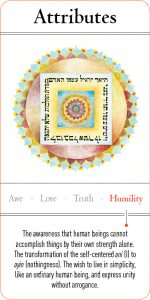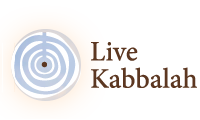Lesson 1 – Part C
 The Zohar describes (Zohar, VaYikra) that the Earth rolls as a ball, so while some are on top others are down; and while for some people the sun shines, for others it is dark; and there is a place where there is daylight all the time except, for a little time of darkness. The Zohar also says that there are seven continents and one of them is not populated.
The Zohar describes (Zohar, VaYikra) that the Earth rolls as a ball, so while some are on top others are down; and while for some people the sun shines, for others it is dark; and there is a place where there is daylight all the time except, for a little time of darkness. The Zohar also says that there are seven continents and one of them is not populated.
We have to remember that those things were said in the 2nd century C. E. – a time when people thought the world was flat. Saying such things was much more than a new idea it was viewed as hallucinatory. However, this helps us to understand one aspect of how Kabbalah influenced the modern era.
The and the Discovery of America
One of the most famous icons symbolizing the end of the insular and dark era of the middle ages is the discovery of America. The leader of this historic campaign was Christopher Columbus, who went bravely and without fear of “falling into the other side” (because the world is flat) toward the west in order to find India.
Rabbi Abraham Zacuto was an instructor and mentor to Columbus. At the end of the 15th century, the great astronomers and navigators were Kabbalists, a guild whose knowledge of the stars and The Book of Formation (Sefer Yetsira) gave them great expertise in astronomy and navigation. Rabbi Abraham Zacuto was among the leading scholars of that time who made the connection between science and the knowledge of Judaism. He had a great influence on the royals of Spain and Portugal that financed the quests for discovering new lands. Being a Kabbalist, Rabbi Abraham Zacuto received his knowledge about the earth from the Zohar. It is clear that the knowledge he had, he passed on to his students and Christopher Columbus was among them. He was also the one who advised King Manuel I of Portugal to send Vasco da Gama to his historic journey around Africa and guided Vasco da Gama and prepared him for the famous journey.
The Da Vinci Code and the Zohar
Many books have been written about the history of science and the link between the popularity of Kabbalah in 17th century Europe (among non Jewish scholars) and the foundations of science the way we know it today. An evidence for that can be found in many principles mentioned in the best seller “The Da Vinci Code” whose origins are found in Kabbalah. In another best seller, “Jews, God and History”, Max I. Dimont claims that studying Kabbalah in the 17th century contributed to the scientific revolution of that century. Earlier, the Zohar was translated to Latin and was very widespread among European scholars. The Zohar’s approach toward the exemplary order of universal rules and the fact that nothing happens without a reason influenced many in the birth of research looking for consistency and a reason for every phenomenon in the world.
Anyone who considered himself to be a leading scholar in the world of science in 17th century Europe learned Kabbalah. Science in those days mixed several fields of mysticism, alchemy, etc. Secret orders of that time, such as the Freemasons, learned and developed their own interpretation of the Zohar and the basics of Kabbalah in order to maintain control of human’s destiny and bring an end to human suffering.
Kabbalah: Newton, Leibniz and others
In his book, “The religion of Isaac Newton”, Frank E. Manuel writes that Isaac Newton was convinced that Moses knew and controlled all of the secrets of science. He also believed that on Mt. Sinai we were not given a religion but, the knowledge and the secrets to control the forces of nature. Newton invested most of his time trying to solve the secrets of Kabbalah and finding the connection between the building of the Mishkan (The Tabernacle – a portable temple carried by the Israelites in their journeys), mentioned in the book of Exodus, and the rules of the universe and its structure; and he was not the only one. Leibniz, father of modern mathematics, also wrote that the perfect society of the future, called Utopia would be based on Kabbalah, mathematics, mysticism and mechanics; meaning that the people, who established modern science, learned and based their knowledge on Kabbalah.
Those philosophers were convinced that the ancient Kabbalists had a tremendous influence on important philosophers such as Aristotle and Plato and whenever humanity leapt forward, it was Kabbalah that pushed, inspired and lead to a new revolution, which supported humanity in another step toward the final goal of completeness and peace.
For additional study please enter the course “Level 1 – The Inner World of the Kabbalist” at Live Kabbalah University.
Lesson 1
Part A
What is Kabbalah?
Part B
The Zohar through History
Part C
Kabbalah’s Influence on the Development of Modern Science
Lesson 2
Reality and Illusion, the True World (Olam HaEmet) vs. The False Reality of the bodily senses and mind.
The Language of Branches – The Special Language of the Kabbalists
The Desire and its Fulfillment
Part A
The Rules of Life
Part B
The Way to Happiness
Part C
Logic as a Barrier
Lesson 3
How did it all begin? The Creation of the Universe, The Source of all Souls, What is every Soul made of?
The Big Bang Theory vs. Rabbi Isaac Luria’s Tsimtsum Theory.
What is the source of Evil in this world? The real motivation of the soul vs. Maslow’s Hierarchy of Needs
Part A
Where do we come from?
Part B
Being a Creator
Lesson 4
Good and Evil, Good Inclination and Evil Inclination: Duality as the Source for the Meaning of Life. Free Will: Logic vs. Faith.
Lesson 5
The Tikun doctrine: How everyday’s life is a mirror of the journey the soul is taking. Why do bad things happen to Good People? The Rules of Cause and Effect, Reincarnation in Kabbalistic Teachings.
Lesson 6
Being a Creator – How to understand feelings and emotions? How can we tell between good and evil? The guidance to define negative emotions and the way to transform them.
Lesson 7
Tools for spiritual change:
- Our community.
- The Hebrew letters as an expression of hidden cosmic forces and invisible frequencies – the building blocks of our reality. The marvelous story of the 72 names of the Creator through the unofficial history of the world.
Lesson 8
Basics in Kabbalistic Meditations.
The Name of 42 Letters, The “Ana VeKho’ah” – one of the major holy metitation in the Jewish mystical world.
Lesson 9
“Ets Ha’Haim” – The Tree of Life, Sefirot and Olamot (Worlds).
How is it that The Creator never changes but it looks like He does?
The Cosmology of Good & Evil
The Tetragrammaton.
Lesson 10
The Myths of Messiah, Resurrection of the Dead and the Hebrew Calendar. Prophets of the end of days according to the Kabbalah and the ability to differ between false believes and a guidance to a better future.
To listen to the lessons above, please enter :Live Kabbalah University.
